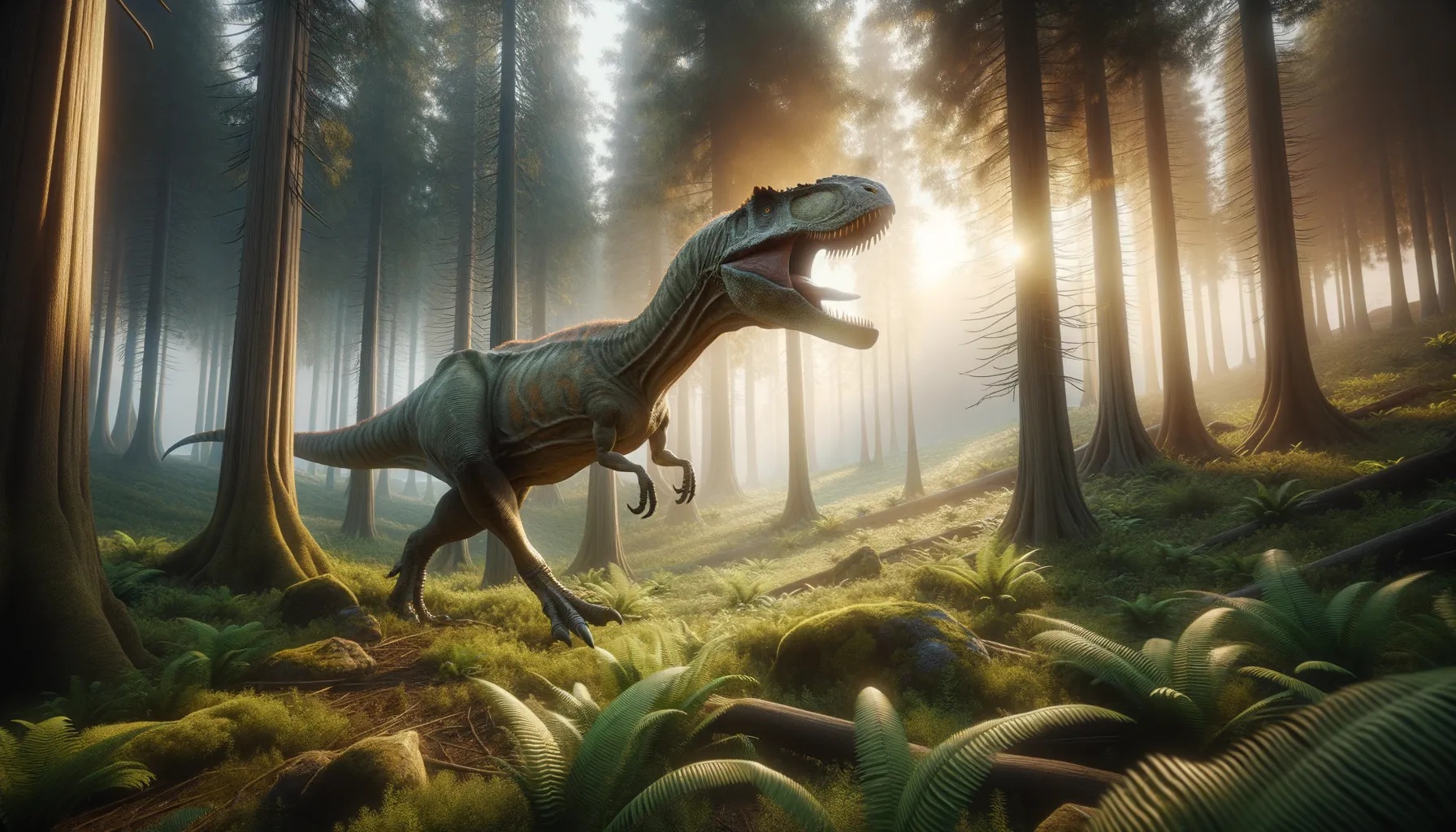
Erectopus
Swift predator of the Cretaceous forests.
Period
Cretaceous
Length
Roughly 5 meters (16 feet) from head to tail.
Height
About 2 meters (6.5 feet) at the hip.
Weight
Approximately 200 to 300 kg (440 to 660 lbs).
Erectopus was a medium-sized theropod dinosaur known from the early Cretaceous period in modern-day Europe. Its discovery provided insights into the diversity of predatory dinosaurs in that region. Predominantly carnivorous, it is believed to have preyed on smaller dinosaurs and other animals in its habitat. Its agile build suggests it could have engaged in quick bursts of movement, ideal for hunting and evasion in its forested environment.
Diet
Erectopus was mainly carnivorous, feeding on smaller dinosaurs and possibly scavenging. Its teeth were well-adapted for slicing through flesh, indicating a preference for meat.
Hunting
Erectopus likely used ambush tactics, relying on its agility and sharp claws to catch prey. It may have hunted solitarily or in small groups, using vegetation as cover to stalk its targets.
Environmental challenges
Living in the early Cretaceous, Erectopus faced a range of environmental challenges, including finding food during dry seasons. The presence of larger predators posed a constant threat, requiring it to remain vigilant and alert. Natural disasters like floods could drastically alter its habitat, necessitating adaptability. Competition for resources with other carnivorous dinosaurs in its ecosystem was also likely intense.
Speed
Moderate, agile for short distances.
Lifespan
Estimated to live around 20 years.
First discovery
Discovered in 1873 in France.
Fun Facts
- Erectopus was a medium-sized dinosaur that lived during the Early Cretaceous period, around 120 million years ago.
- This dinosaur's name means 'upright foot,' which is a reference to its skeletal remains.
- Erectopus was a member of the theropod group, which includes bipedal predators like the famous T. rex.
- It was originally discovered in France, making it one of the few dinosaurs from this period found in Europe.
- Erectopus likely fed on smaller animals and used its sharp teeth and claws to catch prey.
- Fossils of Erectopus have provided scientists with insights into the locomotion and lifestyle of early theropods.
- Despite its fascinating history, Erectopus is not well-known, adding a sense of mystery to this ancient predator.
Growth and Development
Erectopus, like many theropods, would have hatched from eggs and probably experienced rapid growth during its juvenile stages. This fast development was crucial for survival, as being small and vulnerable made them easy prey. As they matured, Erectopus developed stronger muscles and more defined claws and teeth, aiding in their role as predators.
Habitat
Erectopus lived in a lush, forested area that provided plenty of cover for hunting. The ecosystem was rich with flora and fauna, supporting a variety of life forms, including other dinosaurs. Water sources such as rivers and lakes provided hydration and attracted prey. Seasonal changes in the habitat might have affected the availability of food, requiring adaptability.
Interaction with other species
Erectopus likely shared its environment with both other theropods and herbivorous dinosaurs. It might have had confrontations with other carnivores over territory or food. Symbiotic relationships could have existed with smaller creatures that benefitted from its leftover scraps. It may have also been a rival for prey with similarly sized predators.
Natural lifespan
Erectopus naturally lived for around 20 years.
Reproduction
Erectopus would lay eggs, likely in clutches, in nests made from available natural materials. Parental care may have been minimal, as was common with many dinosaurs of its time. Once hatched, the young would quickly need to fend for themselves and learn to hunt.
Social behaviour
Erectopus might have been solitary, like many theropods, but there is a possibility it occasionally formed groups for hunting or protection. Displays of dominance or territoriality could have been common, especially during the mating season. Communication might have involved vocalizations or visual displays to warn or attract others.
Fossil locations
Fossils of Erectopus have primarily been found in France, providing clues about its European habitat. The discovery of its remains aided in establishing a clearer picture of the dinosaur landscape during the early Cretaceous period. Fossils consist of partial skeletons that have allowed paleontologists to reconstruct much of its anatomy.
